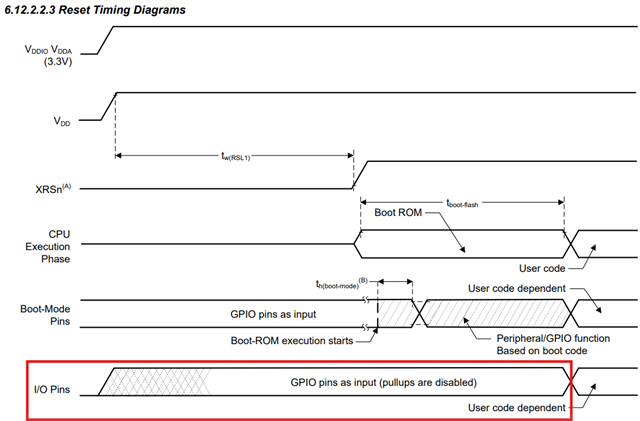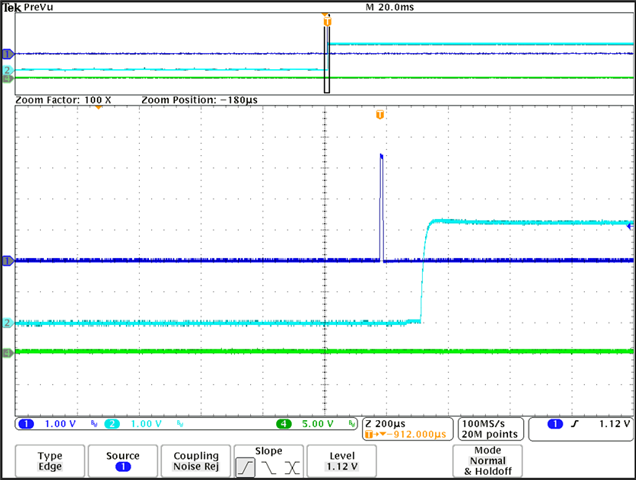Tool/software:
Hi Champ,
I am asking for my customer.
They are using F28P650SK6PZPR (100-pin) device in their end equipment UPS. The device is on control card.
After device powers on and before user configures the IO pins to GPIO, during the time (circled in red) the IO pins are keeping as high-Z input.

Customer encounters an issue that during the time (high-Z input), they measure the pin directly coming from MCU (disconnect the external circuit) that there is a voltage (~3.3V) big enough to cause the gate driver accidentally drive then damage the MOSFET. In the past, I have never seen a solid voltage coupling to the pin before.
Remove control card from main board(eliminate system level), and capture the waveform on MCU pin directly.
CH1: Pin 99
CH2: debug pin to know when the initialized GPIO configuration code is done


(1). Could the expert kindly check if the pin 99 in this package has any difference from other GPIOs ? or the voltage is caused by the GPIO input leakage current (I believe not) ?
(2). Could team help to validate it on our 100-pin socket board with F28P650SK6PZPR and prove the device’s GPIO status during the time from device power on to user GPIO configuration ? It means a lot to prove the voltage not caused by the device.
Thanks for the support.
Regards,
Johnny

